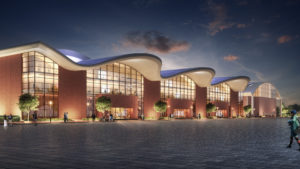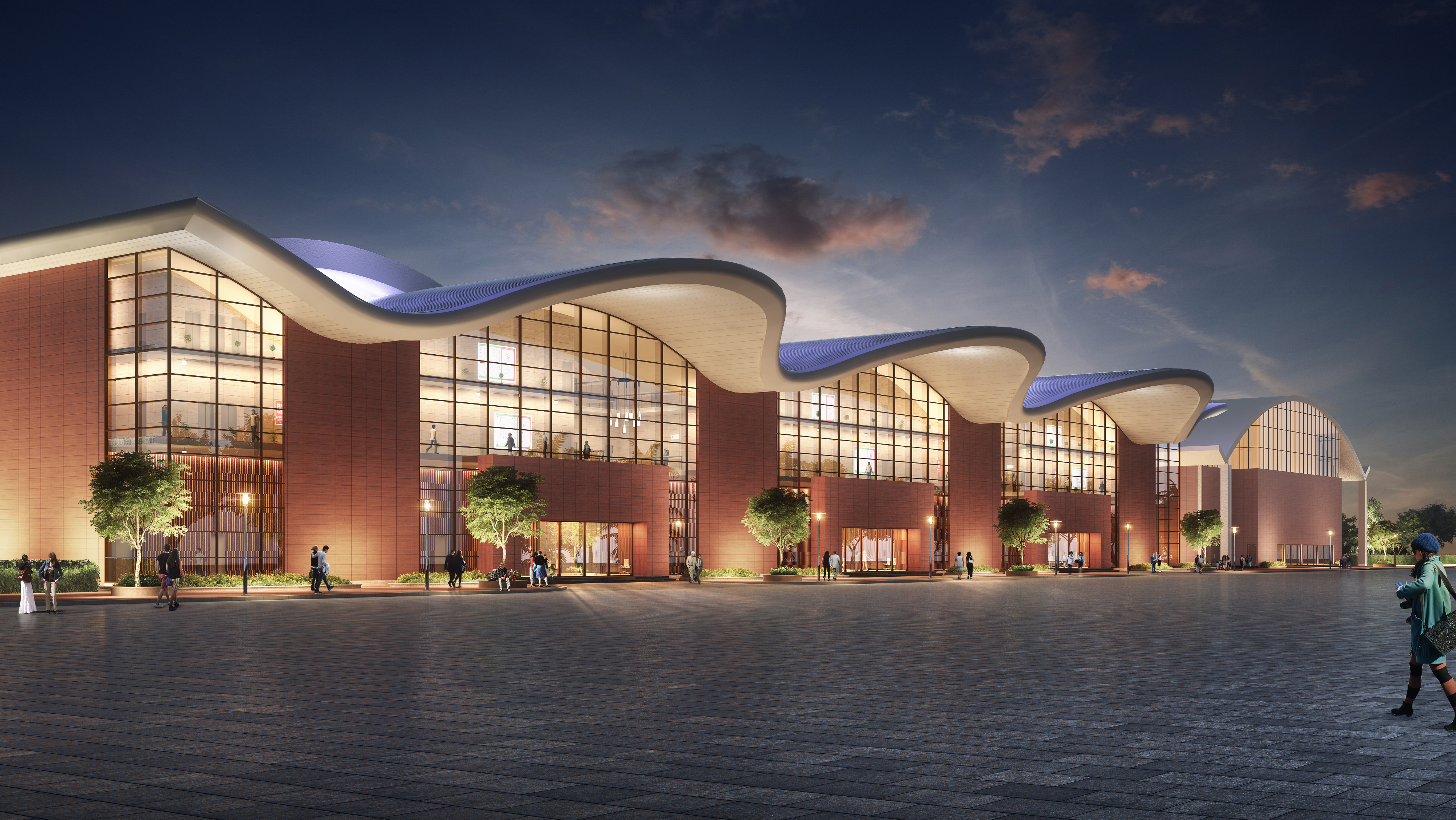
Plans for Hitex’s new Hall 4 (Hyderabad, India).
One of the things I’m most looking forward to learning about at UFI’s debut Latin American event in September, is plans for major venue development in the region. It’s not because I’m a huge fan of buildings you can see from space, it’s because venue development tends to happen only after public sector buy-in – and so it follows that venue development is an indication of a government’s commitment to the virtues of a burgeoning exhibition industry.
And Latin America is a place in need of good venues. As Informa Brazil’s Marco Basso pointed out to me recently, there is a strong concentration of trade shows in the capital city São Paulo, particularly in the B2B market, and among reasons including business concentration, hotels availability and logistics, there are simply better exhibition venues.
“The main potential new venue capability is Anhembi, which used to be the largest venue in Brazil,” he explained. “However, due to its deterioration and the introduction of the recently licensed São Paulo Expo by GL events, Anhembi lost most of the shows. There is a project to privatize Anhembi that is currently being discussed in SP legislative body, but I don´t see this happening in the short term.”
India faces a similar problem with its aging Pragati Maidan in Delhi, a venue from which UBM is moving some of its show in favour of new space in Greater Noida. The organiser has already moved shows such as CPhI &P-MEC and SATTE to the 80,000sqm India Expo Mart and more may follow.
However, unlike Anhembi, redevelopment of Pragati Maidan is underway with 50,000sqm to be added by February 2019 and more coming online seven months later. The ITPO has realised good shows follow good venues and is taking corrective action, involving a modern, state-of-the-art International Exhibition-cum-Convention Centre (IECC) in two phases, which it hope will put it on par with best in the world. The project is, according to the ITPO, of “national importance”.
And it is. While China’s economy is five times larger, its trade fair industry is 11 times larger than India’s.
Holding back the tide
“One of the key reasons for this is an acute lack of venue capacity in India with optimal infrastructure. A lack of venues with truly international infrastructure is missing in India,” says UBM India MD Yogesh Mudras. “India does not have the necessary support infrastructure for large exhibitions with very few large venues of international standards. Venue creation holds the key to future growth, to scale up the exhibitions and provide value to the exhibitors.”
So India stands as a great example of how venue infrastructure can stem the development of a business events industry, and therefore present an obstacle to industry growth in general – certainly among small-to-medium enterprises.
While around 402,000sqm of additional exhibition capacity has been planned in India within five years time, there are currently 22 exhibition venues in the country with a total indoor exhibition area of just 460,000sqm. Compare this with China, where a single new venue in Shenzhen has just been built that exceeds the total international-standard space found in the whole of India; a country with a population of 1.3 billion.
Incidentally Hong Kong, which will soon be 14 minutes from Shenzhen by high-speed train and another place where space is in short supply, but this time for reasons of geography rather than government support, and venue development in Hong Kong is underway at four new sites.
This dedication to providing events space shows an endorsement for an industry that other parts of the world should hope to emulate.
“As of now the exhibition industry in India is unrecognised by the government and therefore, bound to be unorganised apart from a few key players,” says UBM’s Mudras. “India does not have the necessary support infrastructure for large exhibitions with very few large venues of international standards. Venue creation holds the key to future growth, to scale up the exhibitions and provide value to the exhibitors.”
Venue development is rarely achieved without public sector support, so if you want to know how helpful or receptive a municipal or national government is to the exhibition industry, look at their plans for venue development – and follow the money.






Thanks Antony for this utmost interesting report. It is indeed a big problem in India (and Mega Cities in other countries) especially looking at the situation in Mumbai. On the one hand the local governments should be aware of the socio-economic effect of trade shows and venues in the town, but in overpopulated cities like Mumbai, it is understandable that other priorities apply.( see the project idea of Mukesh Metha) Urban planning strategies in these cities following densification and high rise buidlings instead of planning fairgrounds which require ernormous (valuable) space. And for private real estate companies the possible revenue of skyscapers is of course much higher. In developing countries ( I am right now doing research on trade show business in an African country) to convince governments to invest in fairgrounds is even more difficult. India and Brazil are nevertheless strong economies!